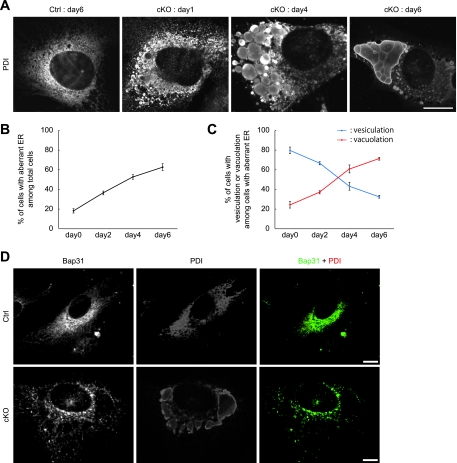FIG. 5.
p31 deletion causes vesiculation and fusion of the ER. (A) p31flox/+ (Ctrl) or p31flox/− (cKO) MEFs infected with Ad-Cre were stained with the antibody against PDI. The ER vesiculates at 1 day after Ad-Cre treatment. The vesiculated ER grows larger to form large vacuoles with time. (B) Cells with aberrant ER (vesiculation and vacuolation) among total cells were already observed 0 days after Ad-Cre treatment and increased with time. The error bars represent the mean ± the standard deviation (SD) (n = 3). (C) p31 deficiency caused ER vesiculation followed by ER vacuolation. The percentage of cells with vesiculated or vacuolated ER membranes (mean ± SD) was calculated from three independent samples. (D) p31flox/+ (Ctrl) or p31flox/− (cKO) MEFs infected with Ad-Cre were double stained with antibodies against Bap31 (green) and PDI (red) 6 days after adenovirus treatment. Bar, 10 μm.

